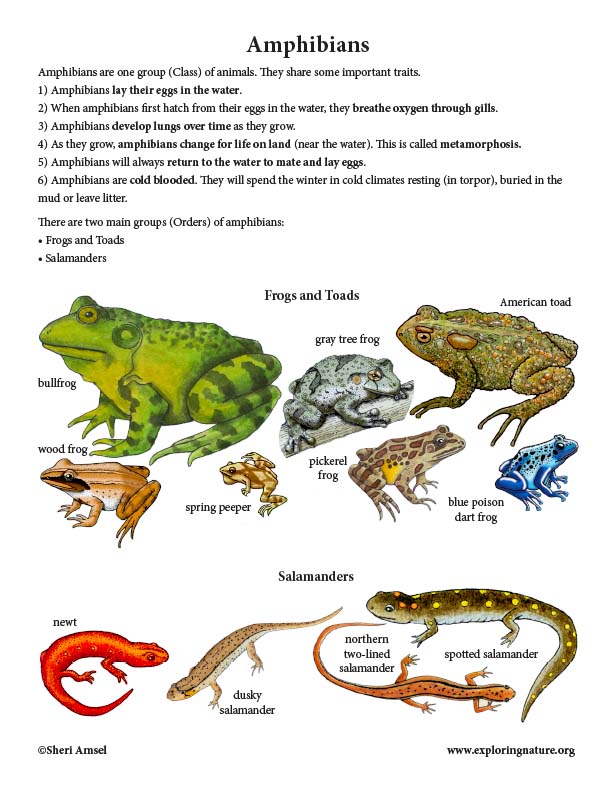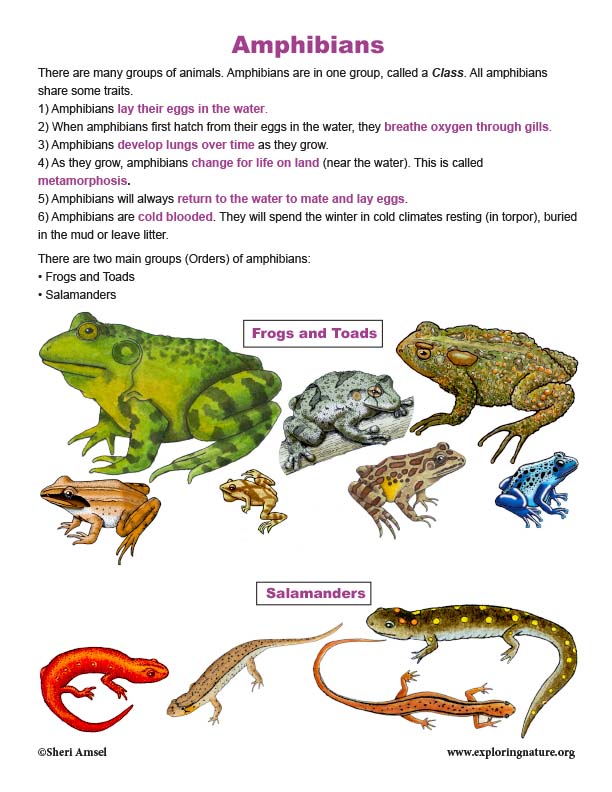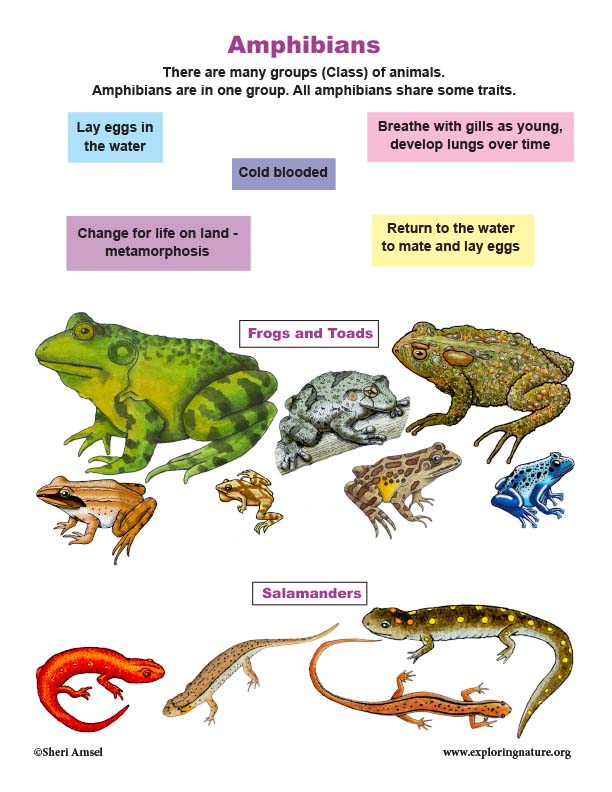

Amphibians are one group (Class) of animals. They share some important traits.
1) Amphibians lay their eggs in the water.
2) When amphibians first hatch from their eggs in the water, they breathe oxygen through gills.
3) Amphibians develop lungs over time as they grow.
4) As they grow, amphibians change for life on land (near the water). This is called metamorphosis.
5) Amphibians will always return to the water to mate and lay eggs.
6) Amphibians are cold blooded. They will spend the winter in cold climates resting (in torpor), buried in the mud or leave litter.
There are three main groups (Orders) of amphibians:
• Frogs and Toads (Anura / Salientia)
• Salamanders (Caudata)
• Wormlike amphibians (Gymnophiona)
Amphibian Classification:
Orders of the Class AMPHIBIA
The class of amphibia is broken down into 3 orders.
1) Caudata (Urodela) – salamanders
2) Anura (Salientia) – frogs and toads
3) Gymnophiona – worm-like amphibians
When you research information you must cite the reference. Citing for websites is different from citing from books, magazines and periodicals. The style of citing shown here is from the MLA Style Citations (Modern Language Association).
When citing a WEBSITE the general format is as follows.
Author Last Name, First Name(s). "Title: Subtitle of Part of Web Page, if appropriate." Title: Subtitle: Section of Page if appropriate. Sponsoring/Publishing Agency, If Given. Additional significant descriptive information. Date of Electronic Publication or other Date, such as Last Updated. Day Month Year of access < URL >.
Amsel, Sheri. "ABOUT AMPHIBIANS" Exploring Nature Educational Resource ©2005-2024. December 13, 2024
< http://www.exploringnature.org/db/view/ABOUT-AMPHIBIANS >


